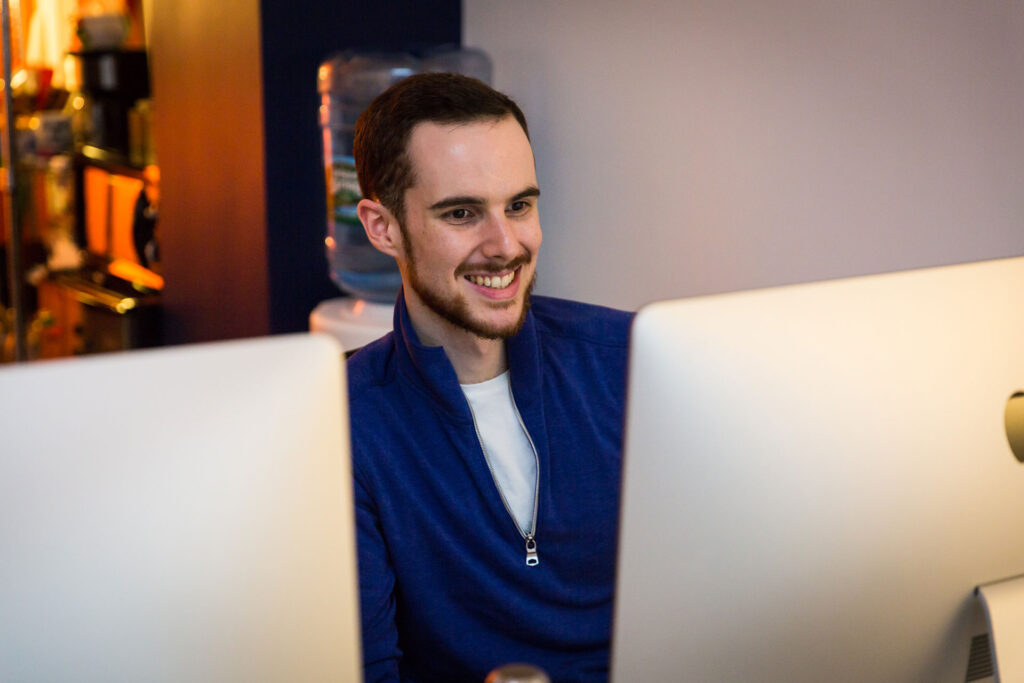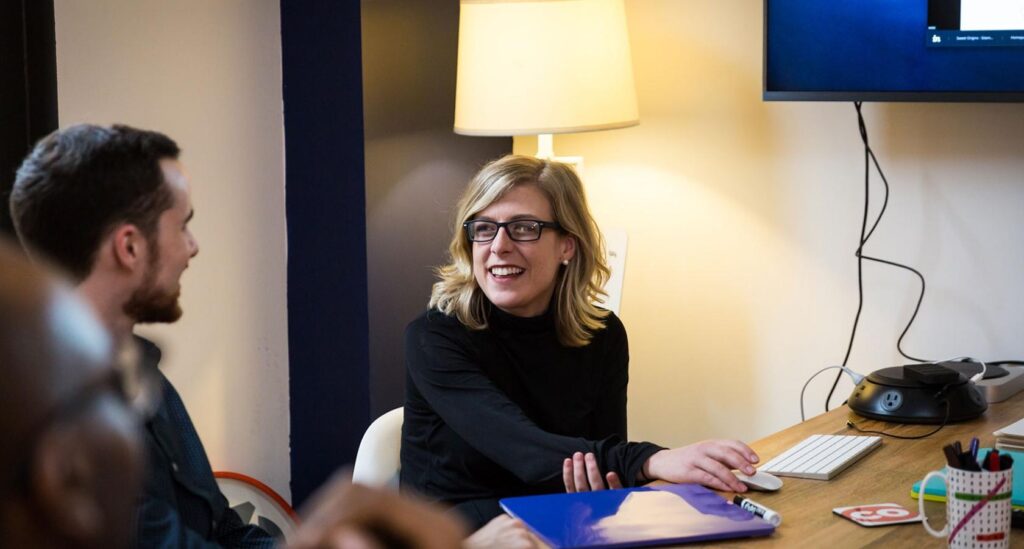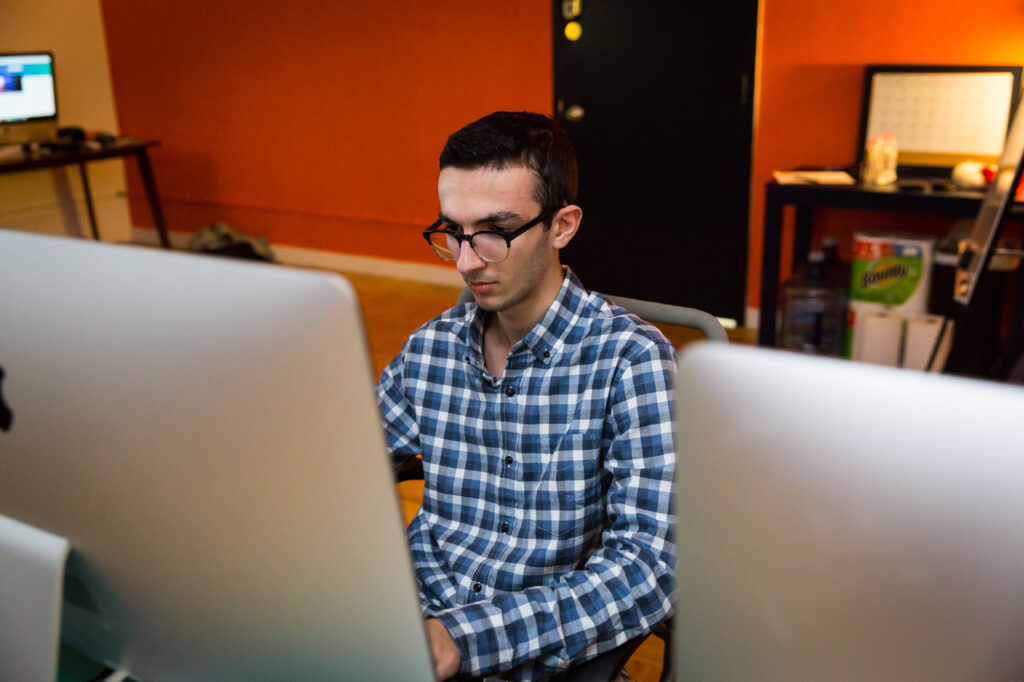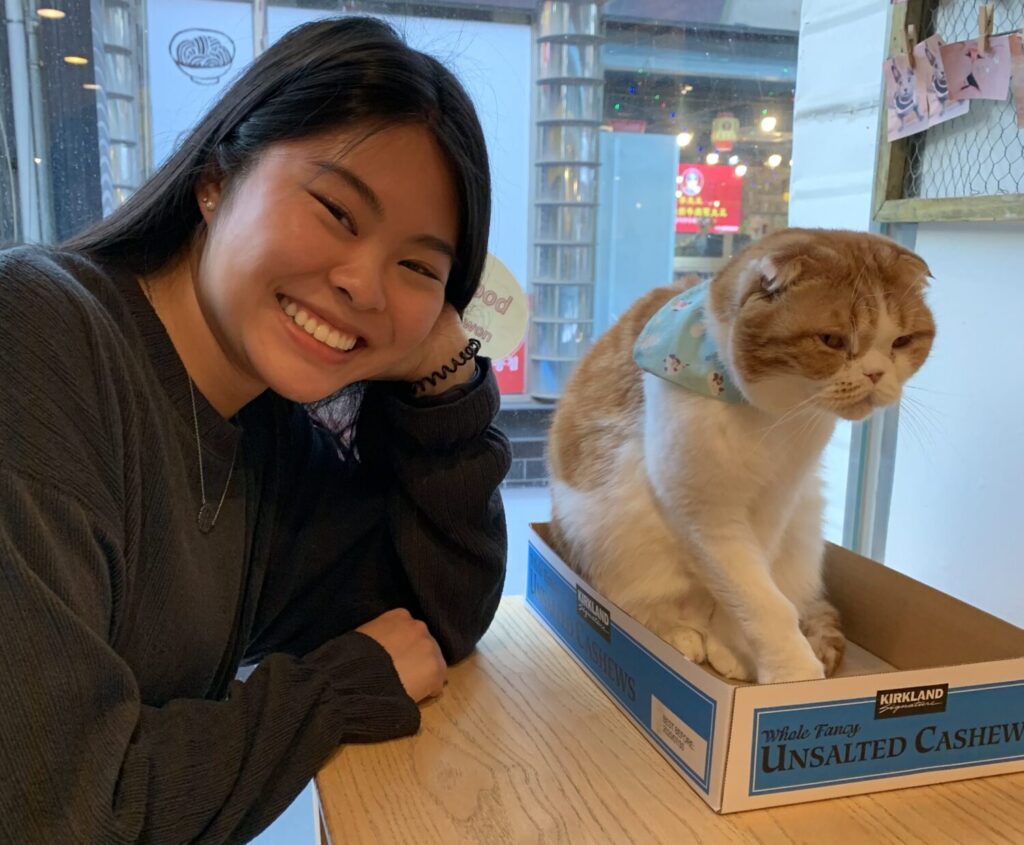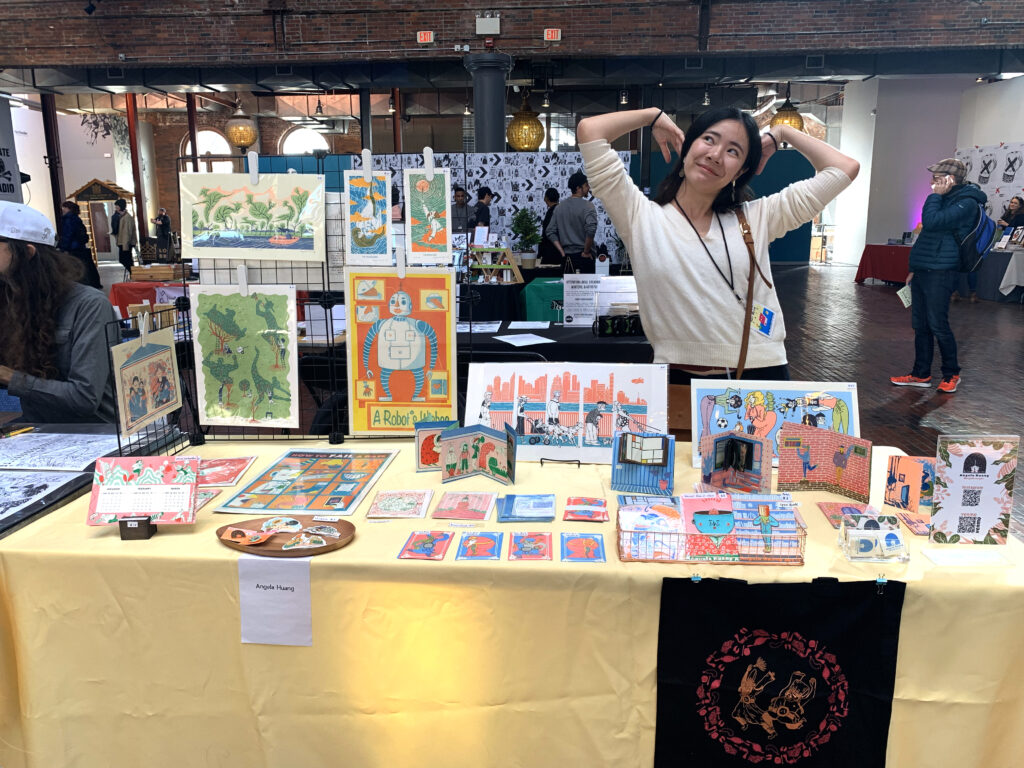Tamara here, taking over from Amber for this last interview since our interviewee is … Amber Weinberg herself, remote Simpatico developer, single-handedly holding down the fort in Simpatico’s Nashville, TN office!
In true #fangirl fashion, I’ve been following Amber’s work and writing for almost a decade. I can say with great certainty you’d be hard pressed to find a front-end developer with cleaner code, a more robust understanding of HTML/CSS fundamentals, a richer hybrid background in both front-end and design, and a sharper, more hilarious sense of humor than Amber. This girl “gets” the Web like no other. In this interview, she talks about making the transition from running her own business for over a decade to joining Simpatico, how she keeps up with the constantly changing landscape of web development, and being a pup mom.
When I first learned to code, back in the 90’s, all we had was HTML. No CSS, no Javascript (though we did have some Java), no CMS’s, fancy animations or backend languages … I can’t imagine just how hard it would be to learn development in 2019, so I’d first give that person a big hug.
Meet Amber
Hi there! My name is Amber and I’m the coolest web developer around (don’t tell Evan!). I’ve been coding since I was 12-ish years old, for over two decades now! I started coding fan sites for animes I loved, which led me to design school, which led me back to coding. I held a few jobs before jumping into being self-employed for almost decade, before charming my way into Simpatico. When I’m not working, I’m either traveling, knitting, reading, or cuddling with my pups.

What’s a typical day at Simpatico like? What are some of your duties?
Out of all the Simpatico team my day is probably the most consistent since I work remotely. The first thing I do when I get into the office is check my emails and catch up on Basecamp and Slack messages. Then I’m on to client development work. I do anything from coding entire websites in WordPress, to making revisions or small additions, to some animation and Javascript coding, or even content implementation. I make an effort to take as much work as possible from Evan’s and Tamara’s plates, since they have to attend in person meetings and client phone calls and I don’t.
You made a big change this year. As a successful entrepreneur who had successfully run her own business for over a decade, what has it been like transitioning to being part of a team?
Going from working alone for almost a decade, to being part of a small team was a big change for me. The biggest lesson I had to teach myself was that I was no longer alone – when I hit the wall with some kind of coding issue, I had three other people I could tap for knowledge. I’ve had to remind myself multiple times that there are others to catch me when I’m having issues with deadlines or feeling stressed out because of project scope.
Joining Studio Simpatico as a developer also means I get to refocus on doing the thing I love most: coding. When you run your own business, a lot of your time is dedicated to admin and client management. I no longer had to worry about estimating, invoicing, looking for new clients, or managing sub-contractors. While I still help out in the marketing of Studio Simpatico, it’s no longer my neck on the chopping block to constantly bring in new work (sorry, Tamara!).
I really love the Simpatico team, there’s only 5 of us plus our lovely intern, Corey, we’re all self-sufficient and able to manage ourselves, and it seems like we’re all partners and friends, instead of employees and bosses. I love that.
What advice would you give to someone who is thinking about taking a remote position? What are some of the challenges in being the only employee is a remote location?
As with everything, working remotely has its set of pros and cons. The pros are easy: I don’t have to wake up early, I don’t have to fight traffic, and I don’t even have to get out of pajamas (although I recommend you still do). I can control my work hours easier and have my office any way I want it. I save money on not using gas or eating out. I get the cuddle with pups all day. I don’t have to live in the expensive city of NYC and leave my family.
But there are also cons. Even as an (extroverted) introvert, it still gets lonely at times. I miss laughing with coworkers and understanding the in-jokes they have. When I need help, it’s sometimes a wait to get someone on Slack if everyone is at meetings or concentrating on something else. It’s also hard to hear sometimes at our standup meetings. I miss out on the office snacks and goodies and nights out with coworkers. I’m part of the team of course, but I’m still remote. Sometimes it’s hard not to be jealous of the fun and photos and such.
All that said, I do love working remotely. If someone else is considering doing the same, my biggest advice is to make sure you have a dedicated space to work, where you can close the door if necessary to drown out the household. Don’t work in the kitchen, because you’ll be constantly tempted to do the dishes and clean up. Invest in a laptop so you can work from a coffee shop or coworking space if things get too lonely at home. It’s good to get dressed up and out the door like you’re going into an actual office every once in awhile.
The web development landscape is constantly changing. How do you stay current on best practices?
This one is tough. I’ve been a web developer since I was a kid, yet I constantly feel like I’m barely keeping my head above water. As much as I hate the platform, Twitter has been the best place to keep up with new trends and features. I follow a lot of people who work with browsers and creating new CSS and HTML features. I also follow people who work in languages or platforms I don’t, just to keep up and understand the basics. This includes things like React, Shopify and Ruby.
To calm my anxiety about growing “too old” and getting “too behind”, I remind myself that I’ve always been able to learn whatever new thing comes out. I was panicking about Flexbox and Grid several years back when I first heard about them, but Flexbox came out first and gave me a good year or two to really grok it before Grid arrived. Now I use both easily. It’s good to remind yourself that while development does change constantly, it’s a very slow change and the underlying web doesn’t really ever change. The things that were important 10 years ago, are still important today, like semantics and accessibility.
As a developer, your background is a bit unique in that you have a degree in Design. Do you use those Design skills frequently? How does it help you in your current job?
All the time. I think having a design degree and working as a web designer for a couple of years is really what gives me a leg up as a developer. While I didn’t enjoy designing professionally, I understand typography, grids, and white space really well and I’m able to translate that to a live website. That’s probably the compliment I’ve gotten the most from every designer I work with. It seems it’s hard to find a developer who pays attention to that sort of stuff.
It also means I don’t have to bother our designers as much. I can make my own graphics if need be (although I always ask Bruce and Sinan first to keep their standards) and I know my way well around the entire Adobe Suite and Sketch. I can also “add on” some templates if the client decides they need something after the design process is finished, which means we don’t have to interrupt the designers’ schedule if they’re working on something else.
You’ve been in the field for a long time. Can you tell us some of the best (and worst) changes that have occurred in the industry since you started out?
Ha! Where to begin? My biggest pet peeve is the fascination with frameworks, both CSS and JS. I’ve never seen a framework or drag-and-drop interface that can produce code as well written as a great developer. I really hate React and the trend to put plain websites in Javascript, which leads to a lot of white screens, broken sites, and inaccessible code.. Thankfully, like all bad trends (ugh Bootstrap), it seems the tides are already turning and people are removing these heavy frameworks and going back to well-written semantic code.
What advice would you give someone who is contemplating a career as a web developer?
I can’t imagine just how hard it would be to learn development in 2019, so I’d first give that person a big hug. When I first learned to code, back in the 90’s, all we had was HTML. No CSS, no Javascript (though we did have some Java), no CMS’s, fancy animations or backend languages. The web was pretty boring back then and it was a lot easier to learn.
If you’re starting from nothing, I’d recommend learning semantic and accessible HTML and CSS first. Due to all the shiny JS frameworks and such, there’s a shortage of front-end developers who really know the basics really well, and there are a lot of jobs opening up in this area. Then I’d recommend learning some JS and perhaps discovering where you’d like to take a deep dive in. Do you like the animations side of the web? Databases? UX? There are so many areas you can choose to specialize in, it’s good to dabble in several until you figure out what you love. I stumbled on WordPress about 10 years ago after college and early in my career, and I’ve never left it since (especially after I worked in Drupal and Joomla YUCK).
I know a lot of aspiring web developers enroll in coding bootcamps. Some of them have a fantastic curriculum, but I’d recommend avoiding them in most cases. Many are heavy on Javascript frameworks, while leaving out or only grazing HTML and CSS, which is what I believe has led to the over reliance on these frameworks. Everyone wants to fly, but you kinda have to learn how to stand and walk first.

